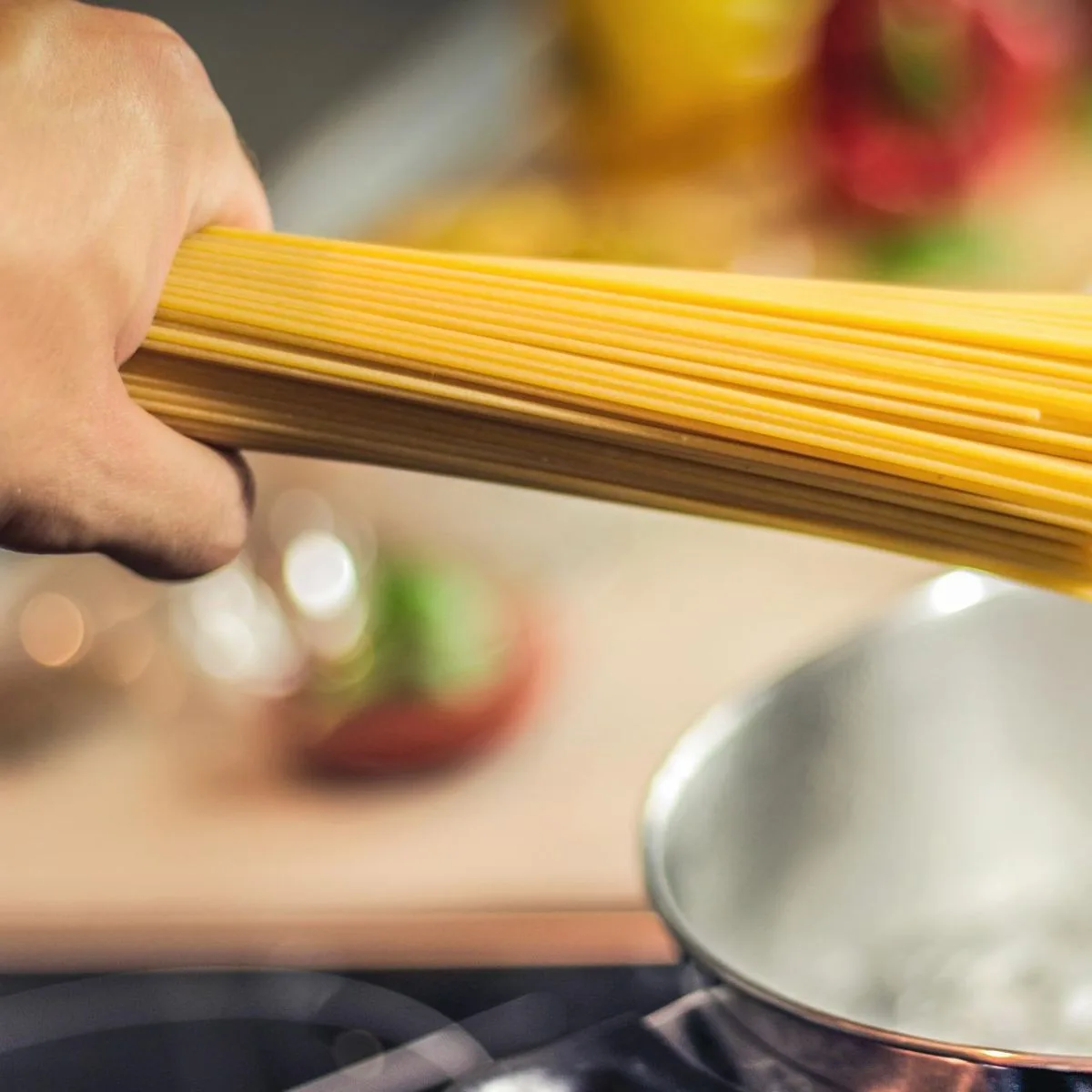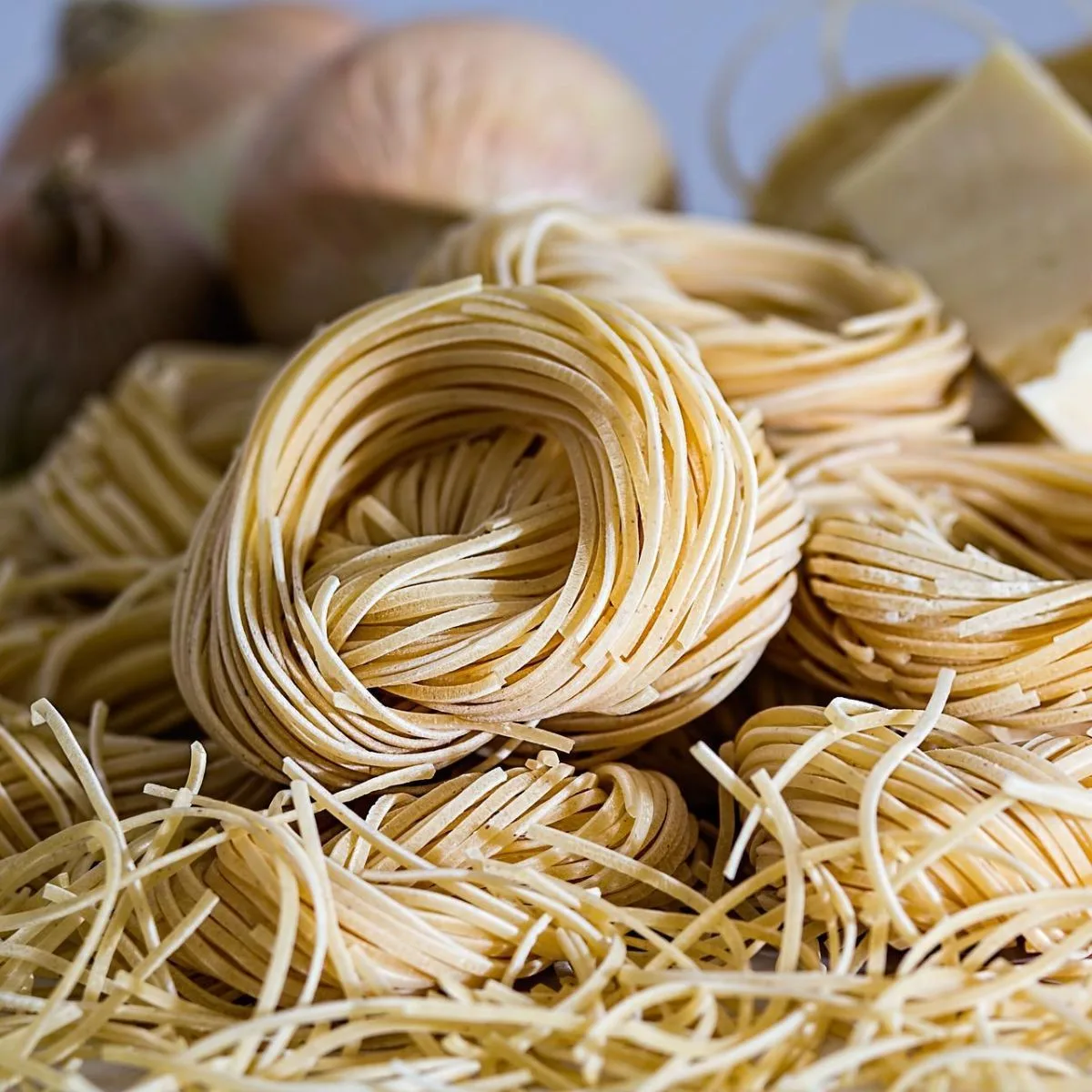Spaghetti vs Capellini: Here’s How to Spot the Difference!
Introduction
With over 300 varieties of pasta from Italy, it’s little wonder why it can be hard to memorize them all.
Even in the supermarket, you’re only provided a scaled-down selection of the available pasta types out there.
Looking at the boxes, some of them may look identical yet feature different names.
That’s certainly the case with spaghetti vs capellini.
Is there even a difference between them, besides the name?
As it turns out, there’s more than that to differentiate these two long pastas.
Read on, and you’ll soon know what makes spaghetti and capellini different!
Spaghetti vs Capellini: differences
What is Spaghetti?

https://pixabay.com/photos/spaghetti-pasta-boiling-water-569067/
Spaghetti is one of the most common types of pasta you’ll find in that pasta aisle of your favorite supermarket.
It is long and thin, though not too thin.
This makes it hold up really well for many sauces.
The medium density of spaghetti, which translates to ‘little twine,’ makes it a fan favorite for pasta lovers all over the planet.
It goes great with olive oil, a light tomato-based sauce like marinara, pesto, wine-based sauces, and butter-based sauces too.
Cooking it al dente gives it a tender texture yet enough bite to it.
Perhaps spaghetti is so well-adored because it makes it easy to get a good sauce to pasta ratio for that impeccable balance.
What is Capellini?
If you’ve never heard of capellini, perhaps you’ve heard of angel hair pasta.
This is the same thing!
Capellini is an ultra-thin pasta.
The strands are usually no more than 0.85 to 0.92mm.
Because it’s so thin, it cooks more quickly too.
Hold up a strand of spaghetti next to a strand of capellini, and you will spot the difference right away.
Capellini, or angel hair, is incredibly delicate.
It is soft in taste and texture, making it a different experience from overeating spaghetti. However, because it’s so thin, you have to be careful not to overcook it.
It is far less forgiving than spaghetti.
If you want to make capellini, plan on pairing it with light and simple sauces.
Anything too heavy will bog it down.
With pesto, it can be the basis of a perfect meal.
It would also be great for a pasta primavera.
How to Cook Spaghetti and Capellini
When you cook either spaghetti or capellini for dinner, it all starts out the same.
You’ll need to boil water in a large enough pot to hold the amount of pasta servings you need.
Once the water boils, add some salt and put either your spaghetti or capellini in there.
Whichever one you choose, you should be ready to stir the pasta immediately into the water. However, with angel hair capellini pasta, you need to be extra gentle during this step.
The capellini pasta will be al dente in 4 minutes.
When it’s ready, you can drain it and serve it immediately with a suitable sauce for these thin and dainty strands.
As for spaghetti, al dente should come around 8 minutes.
You can test a strand to see if it is tender enough or if it needs to keep cooking for an additional minute.
When spaghetti is ready, you will also need to drain it and put it with the sauce you want right away.
ALSO READ: The Biggest Difference Between Sage vs Mint
Spaghetti, Capellini, and Other Ribbon Pastas
What do you do if you want to make spaghetti or capellini but can’t find either one?
If you’ve run to the store to grab the ingredients to make a special pasta dinner tonight, but neither option is there, you can simply turn to one of the many other ribbon-cut pastas out there.
Vermicelli’s translated name of ‘little worms’ certainly doesn’t make for a selling point, however, it’s made with the same ingredients as spaghetti and capellini, no worms included.
It’s a bit thicker than spaghetti, so if you were planning to make spaghetti, vermicelli will be a reliable stand-in.
On the other hand, linguine is much wider than that.
These ribbons are long and flat, perfect with creamy sauces.
Tagliatelle is similar to linguine, though it is usually made with dough that is enriched with eggs.
This one is great with meaty sauces. Going wider, there’s pappardelle which are large, broad, and flat noodles, typically made with extra egg.
And if you find bucatini, you may want to give it a try.
It’s almost like a skinny straw that looks like spaghetti.
You’ll love it with a rich sauce that gets into the straw-like center.
ALSO READ: Radish vs Beet: aren’t they the same?
Kitchen Tips for Making Spaghetti and Capellini
Even if you’re far from Italy, you can bring the warm and delicious flavors from there to your kitchen.
Both spaghetti and capellini are great pastas, though any pasta you choose can make for a phenomenal meal.
However, there are some things you should make sure you do when making all types of pasta.
For starters, use a large pot.
When you use a pot that is too small, adding the pasta in drastically drops the water temperature.
This means it will take far longer for that water to get back up to a boil.
What’s wrong with that?
The pasta clumps together in a smaller pot because the ratio of water to starch is higher.
This makes for mushy, unpalatable pasta.
Once you get the water boiling, you need to add salt.
This keeps the pasta from developing a slimy texture and from sticking together too.
It does add flavor too, but the biggest reason not to skip salting the water is so your pasta texture comes out perfectly.
Make sure you’re stirring your spaghetti and capellini while it cooks too.
It’s important to stir from the moment you drop it into the pot but also at intervals. Set a timer to make sure you don’t forget to stir, or to drain it and pair it with sauce once it has cooked long enough.
Whether you serve angel hair capellini or spaghetti tonight, now you’ll know how to ensure restaurant-quality pasta dishes coming from your kitchen!
ALSO READ: Why do carrots give me hiccups?
